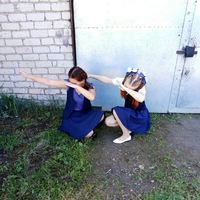
H2S → S → CuS → SO2 → SO3 → H2SO4 → ZnSO4 → BaSO4
 0
0
 0
0
Ответы на вопрос
 Внимание! Ответы на вопросы дают живые люди. Они могут содержать ошибочную информацию, заблуждения, а также ответы могут быть сгенерированы нейросетями. Будьте внимательны. Если вы уверены, что ответ неверный, нажмите кнопку "Пожаловаться" под ответом.
Внимание! Ответы на вопросы дают живые люди. Они могут содержать ошибочную информацию, заблуждения, а также ответы могут быть сгенерированы нейросетями. Будьте внимательны. Если вы уверены, что ответ неверный, нажмите кнопку "Пожаловаться" под ответом.

Ответ:
H2S → S → CuS → SO2 → SO3 → H2SO4 → ZnSO4 → BaSO4
- 3H2S + SO3 → 4S + 3H2O
- S + Cu → CuS
- 2CuS + 3O2 → 2CuO + 2SO2
- 2SO2 + O2 → 2SO3
- SO3 + H2O → H2SO4
- H2SO4 + Zn → ZnSO4 + H2↑
- ZnSO4 + BaS → BaSO4 + ZnS
 0
0
 0
0

The sequence you provided represents a series of chemical reactions involving hydrogen sulfide (H2S) and various compounds containing sulfur.
H2S (hydrogen sulfide) is converted to S (sulfur). This could occur through a variety of reactions, such as combustion or oxidation.
S (sulfur) reacts with copper (Cu) to form CuS (copper sulfide). This is a typical reaction between a metal and a non-metal.
CuS (copper sulfide) can be further processed to produce other compounds, but the specific reactions are not mentioned in the sequence you provided.
CuS (copper sulfide) or other sulfur compounds may be oxidized to produce SO2 (sulfur dioxide). This reaction typically involves the addition of oxygen.
SO2 (sulfur dioxide) can be further oxidized to form SO3 (sulfur trioxide). This reaction usually requires a catalyst.
SO3 (sulfur trioxide) can react with water (H2O) to produce H2SO4 (sulfuric acid). This is a highly exothermic reaction and a major industrial process for producing sulfuric acid.
H2SO4 (sulfuric acid) can react with zinc (Zn) to form ZnSO4 (zinc sulfate). This is a typical reaction between an acid and a metal.
ZnSO4 (zinc sulfate) can further react with barium chloride (BaCl2) to form BaSO4 (barium sulfate). This reaction involves the exchange of ions.
Overall, this sequence represents a series of transformations involving sulfur and sulfur-containing compounds, resulting in the formation of different substances along the way.
 0
0
 0
0
Топ вопросов за вчера в категории Химия
Последние заданные вопросы в категории Химия
-
Математика
-
Литература
-
Алгебра
-
Русский язык
-
Геометрия
-
Английский язык
-
Химия
-
Физика
-
Биология
-
Другие предметы
-
История
-
Обществознание
-
Окружающий мир
-
География
-
Українська мова
-
Информатика
-
Українська література
-
Қазақ тiлi
-
Экономика
-
Музыка
-
Право
-
Беларуская мова
-
Французский язык
-
Немецкий язык
-
МХК
-
ОБЖ
-
Психология
-
Физкультура и спорт
-
Астрономия
-
Кыргыз тили
-
Оʻzbek tili




















